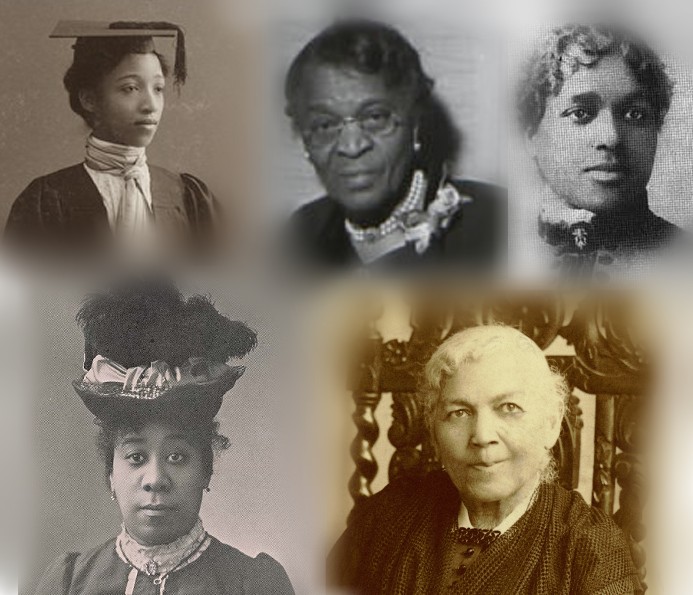African American Women of 19th Century Cambridge, MA
Introduction
Text-to-speech Audio
This walking tour is a partnership between a History Department course at Harvard College and the Cambridge Black History Project to provide an opportunity to visit and interact with the spaces that influential Black women in Cambridge inhabited during the 19th century. These historical figures include Harriet Jacobs, Charlotte Hawkins Brown, Alberta V. Scott, Pauline Hopkins, Maria Baldwin, and Mary Walker. From boarding houses to cemeteries, these sites allow tourists to consider themes centered on family, social networks, education, entrepreneurship, and many more that were central to these women’s personal and professional lives. Although we will never be able to fully understand, reconstruct, or reclaim the histories of Black women activists who walked the streets of Cambridge, this tour attempts to shed light on their accomplishments; on the impact that they had on this city, state, nation, and world during their time; and on how they might serve as models in the modern day.
Images
(From top left to bottom right) Alberta V. Scott, Charlotte Hawkins Brown, Maria Baldwin, Pauline Hopkins, and Harriet Jacobs

Backstory and Context
Text-to-speech Audio
This walking tour is a partnership between a History Department course at Harvard College and the Cambridge Black History Project to provide an opportunity to visit and interact with the spaces that influential Black women in Cambridge inhabited during the 19th century. These historical figures include Harriet Jacobs, Charlotte Hawkins Brown, Alberta V. Scott, Pauline Hopkins, Maria Baldwin, and Mary Walker. From boarding houses to cemeteries, these sites allow tourists to consider themes centered on family, social networks, education, entrepreneurship, and many more that were central to these women’s personal and professional lives. Though not as well-known themselves, some of these women were part of the same networks as famous Black male intellectuals such as Booker T. Washington and W. E. B. Du Bois. Although we will never be able to fully understand, reconstruct, or reclaim the histories of Black women activists who walked the streets of Cambridge, this tour attempts to shed light on their accomplishments; on the impact that they had on this city, state, nation, and world during their time; and on how they might serve as models in the modern day.
Cambridge has historically been an ever-changing city, serving as the common ground on which many of the women featured in this tour lived their lives, some even at overlapping moments in time. Communal institutions like churches, schools, community centers, and green spaces served as meeting places for people and ideas. During the time these women lived in Cambridge, the city’s Black population was small-- in the 1850s, there were no Black churches in Cambridge, and in 1860, Cambridge had about 350 Black residents. **The history of women in Cambridge begins with Indigenous women of the Massachusett, Nipmuc, and Wampanoag nations. These women often served as political leaders whose authority was recognized in their own communities as well as by English settlers. We acknowledge the history of violence, enslavement, and forced removal of Indigenous people from this land now known as New England, and we honor and respect the Indigenous communities that are still connected to this land. As you embark on our walking tour, remember that the Indigenous history of the land and its people is foundational to the stories of every individual who later lived here.
This walking tour was created in collaboration with the Cambridge Black History Project (https://www.cambridgeBlacktrailblazers.com/). We are grateful to the members of the Cambridge Black History Project for their affirmation of this work: “The members of the Cambridge Black History Project would like to express our collective appreciation to the class for this effort. This work is an important complement to the mission of the Cambridge Black History Project to illuminate the contributions of Black citizens to the history of Cambridge, and to make that history more inclusive and accessible to all. Your project not only contributes to the body of knowledge, but will enhance the accessibility of that knowledge by bringing additional context to the lives of historic figures. We hope this project is just the beginning of a perpetual map tour to which we can continue to add."
Acknowledgements: As the co-conveners of this class, we are grateful to the Schlesinger Library (and especially to librarian Tamar Gonen Brown) at the Harvard Radcliffe Institute for support and assistance in conducting research for these entries. We also thank the Mindich Program in Engaged Scholarship at Harvard for funding and organizational support. We thank the wonderful students in this class: Amanda Su, Ana Davis, Casey Soto, Courtney DeLong, Dara Badon, Emily Romero, Kyra March, Lilah Penner Brown, Maribel Cervantes, Michael Black, Ruva Chigwedere, Tessa Wood, and Tolu Moses. Finally, we thank you for reading our tour at a geographical distance or walking it on the ground in Cambridge, and we invite you to comment via Clio if you see errors of fact in need of correction. --Alyssa Napier and Tiya Miles
